I recently turned an unused part of my backyard into a small vegetable garden. Then my dogs discovered it and now I don’t have a small vegetable garden in my backyard. It turns out that freshly turned earth = doggies’ playground. Though I can’t benefit from my backyard vegetable garden, maybe you can create a successful one. Here are the steps I took:
Step 1. Choose an appropriate space. This may not be as easy as it sounds. Ideally, your garden should get at least six hours of full sun a day. I had a vegetable garden last summer in a nice sunny spot, but the deer got to it and ate all my vegetable plants down to the ground. I didn’t eat a single vegetable from the garden. So this time, I decided to put my vegetable garden in my fenced-in backyard (even though it doesn’t quite get full sun) to ensure that the deer didn’t get to it. As you now know, the deer didn’t touch it; the dogs did. Anyhow, here’s the spot before I did any work:

Step 2. Clear the space of any weeds.
Step 3. Dig the bed’s soil to at least six inches deep. Be careful where you dig. Our town offers a service where you can call to report that you’re going to be doing some digging in your yard and they’ll contact the appropriate utilities companies to come out and mark underground wires and pipes. I did not do this and, as a result, had my typical, “Woman, you’re a fool” gardening moment when I realized that I dug up my phone line. Fortunately, I didn’t do any damage. However, this was a stupid move since the placement of the phone line shouldn’t exactly have been a surprise given that when I dug it up I looked up and saw this:

That's the phone box off to the left.
Step 4. Amend the soil. Our soil here is very heavy clay. When I dig it, it comes up in chunks. A plant would need to have freakishly strong roots to get through this soil. So in order to make the soil looser and give it some nutrients, I added a wheelbarrow full of compost mixed with leaf mold and dug it into the soil in the vegetable bed.

Leaf mold is a fancy term for shredded leaves that have been decomposing in my driveway for quite some time. Our town offers curbside pick-up of leaves in the fall. If you call ahead of time, they will also drop off a huge pile of leaves that have been shredded in their big machine. I did that in the fall of 2008 and I’m only now finishing the leaf pile. If your town doesn’t offer such a service, an easy alternative is to rake your leaves in the fall into big plastic bags. Tie them up and punch several holes in them with a screw driver. Leave them alone and in the spring they’ll be nicely decomposing. For bonus points, you could run your lawnmower over the leaves before you rake them and put them in the bag; the lawnmower will shred them for you which will speed up the decomposition process.
Step 5. After you amend the soil, wait a couple of weeks (if you’re patient). Waiting allows the soil to settle and attract nice earthworms. I am seldom patient and since I had already had the vegetables that I wanted to plant, I just went ahead and added them. Had I waited, I would have seen that my dogs wanted to dig up the earth and might have reconsidered planting my vegetables there. Ah, hindsight.
Step 6. Dig a hole twice as wide as the root ball and as deep as the vegetable plant was in its container. The vegetable plant should sit evenly with the surrounding soil. Place the plant in the hole and fill in with the soil. Press down firmly on the surrounding soil. Continue with the rest of the plants in the same manner. Water thoroughly.
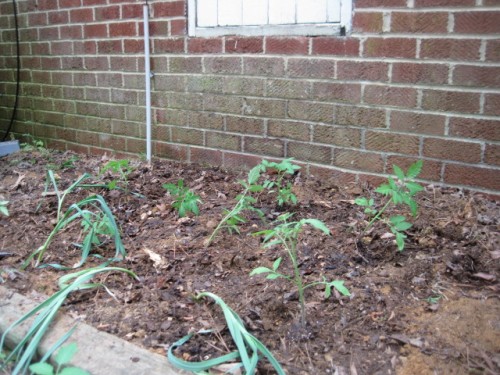
Lovely while it lasted
I planted tomatoes as well as some leeks that my neighbor Kirsten gave me. The vegetable garden looked pretty good. My dogs thought so too. Truth be told, I suspect it was just one of my dogs who dug up my garden, but I won’t name names. All I can say is this particular dog is awfully lucky I have a little thing called unconditional love for her.

See how she's all playful and happy after digging in my garden?
Fortunately, I was able to salvage most of the vegetable plants. Now I just have to decide what to do with them. Should I brave the deer and plant them in the sunny, unprotected part of my yard, or should my new vegetable garden look something like this:

Two brave tomato plants
Decisions, decisions.
Read Full Post »

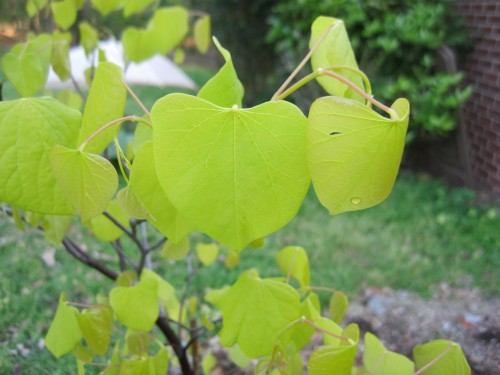




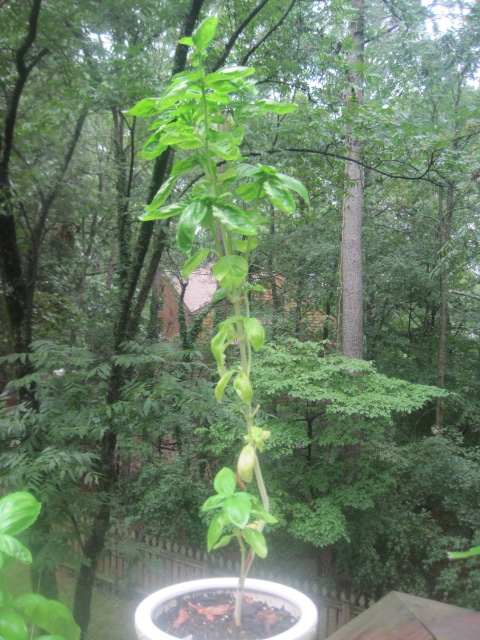
























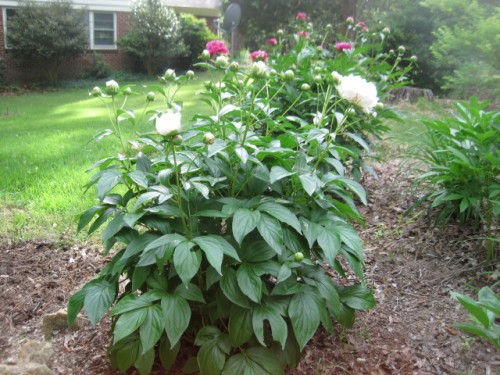




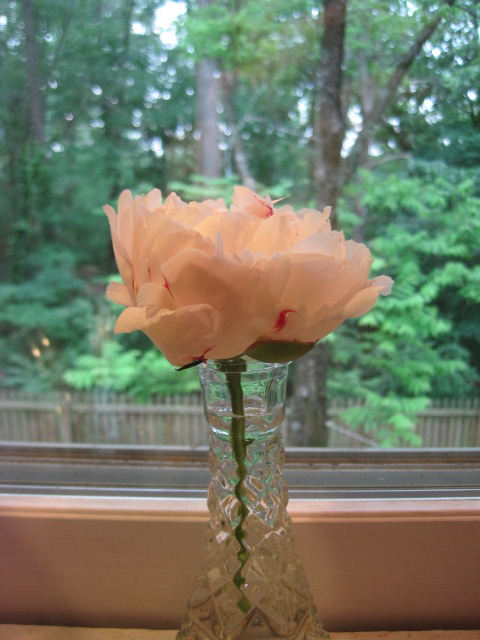

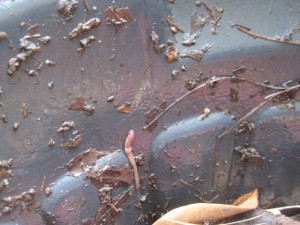
You must be logged in to post a comment.